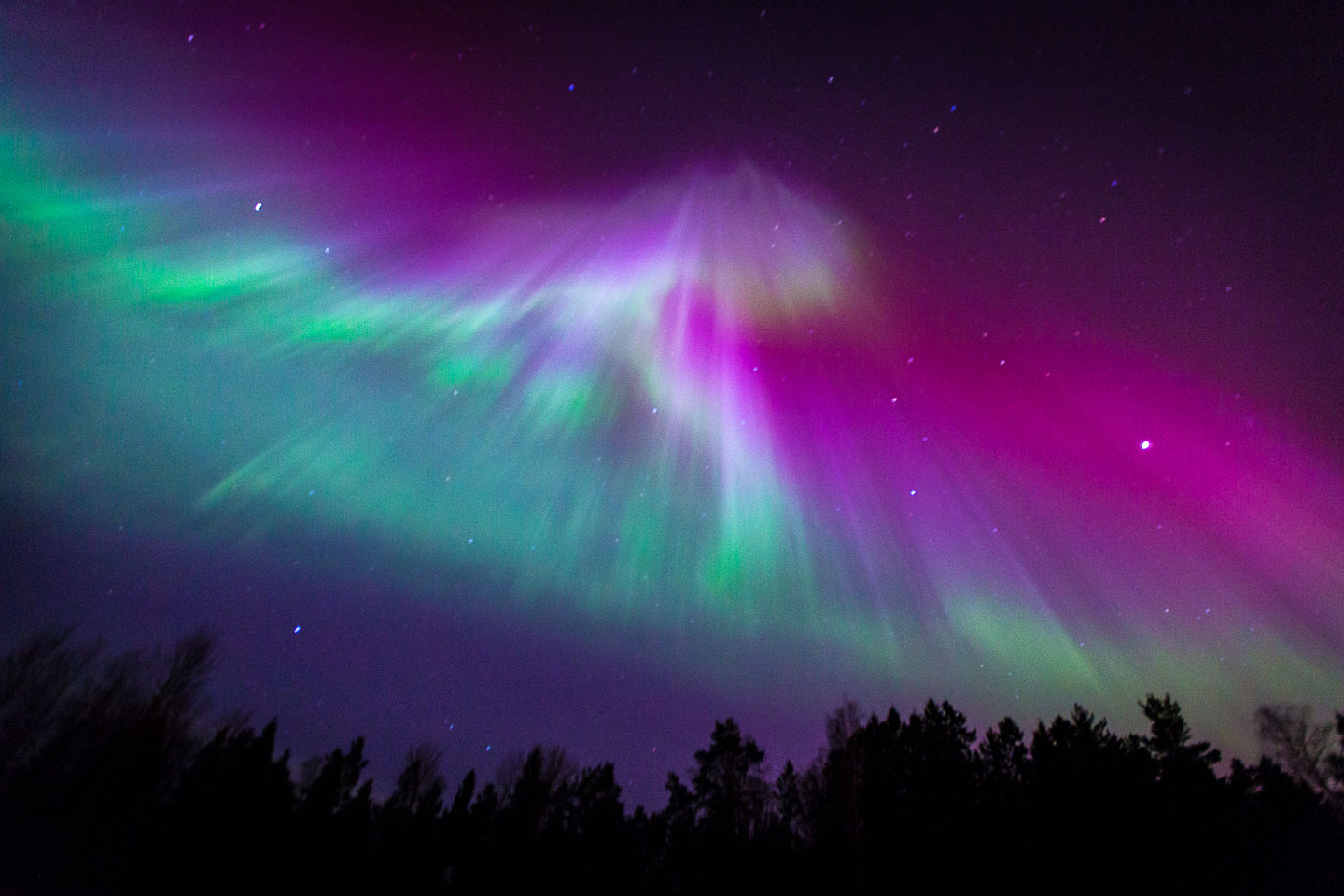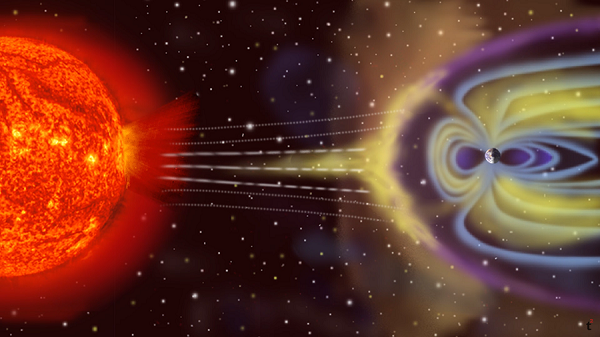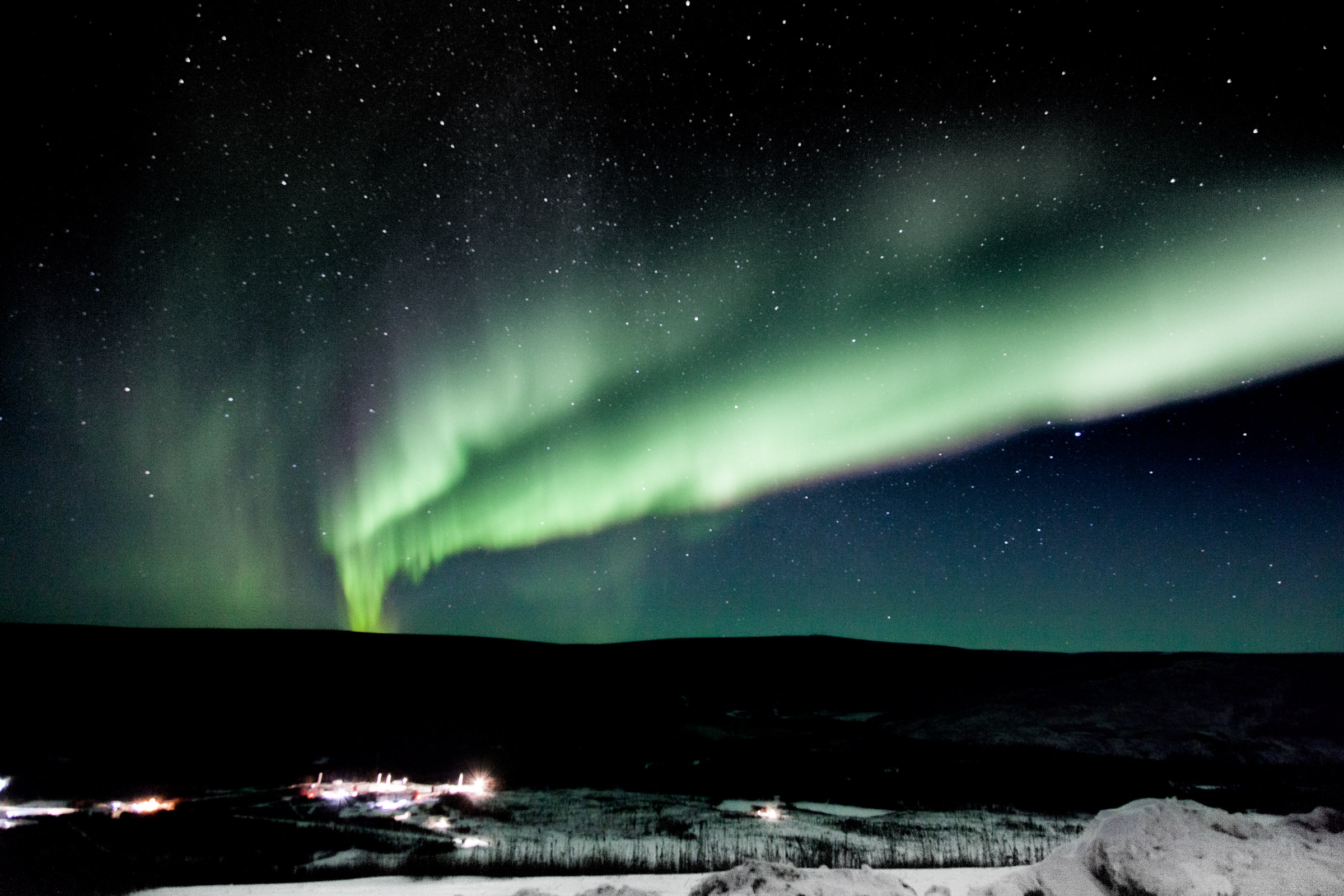Aurora had but newly chased the night,
And purpled o’er the sky with blushing light.-JOHN DRYDEN, Palamon and Arcite
The sun splatters a million colors onto the sky and the scenic landscape that follows ensures that we are safe from the grips of the deadly solar flares. A bad omen, a fleet of hovering spirits or the tail of the Firefox; the folklore and fairy-tales are countless. Call it beautiful, enchanting, dazzling or breathtaking, words fail to do justice to the splendid scene of the sky bursting out in green ribbons and its vivid reflection in the lake below. The ‘Aurora Borealis’ or just ‘Northern Lights’ is a crackerjack that one must augment to their bucket list of Things-Not-To-Miss!

What is Aurora Borealis?
The Aurora Borealis, popularly known as the ‘Northern Lights’ is a spectacular light show witnessed across many regions near the northern and southern hemisphere. The entire phenomenon is natural, painting the sky in neon like lights composed of many different colors. The Northern Light is called ‘Aurora Borealis’ whereas its southern counterpart is called the ‘Aurora Australis’.
Why does it occur?
Our sun, as we know is a source of infinite energy (P.S. not actually ‘infinite’). From time to time, it literally leaks out this energy in the form of ‘Solar Flares’ which travel in all directions in the form of ‘Solar Winds’. These outbursts of energy have the potential of causing mass extinction but our earth is very well prepared for it. The solar winds literally bounce off the earth’s magnetic fields and never get to us, except some of them that actually do!

This little fraction of Solar Wind gets in through the two weak points in earth’s magnetic field – The North and South poles. These solar winds then interact with the atmospheric air and the molecules in it, charging them with energy and getting them excited. Remember the last time you went on a trip and had to post a hundred photos on all types of social media to slowly release the enthusiasm? Well, these excited molecules need to release their energy as well – which they do by sending out little packets of lights or photons. Different molecules associated with different gases send out photons of different wavelengths corresponding to light of different colors. Viola! There you have your colors.
The only thing more exciting than experiencing the Aurora Borealis is to experience it with friends, whooping and hollering.
-YOUNG KIM, “How to Chase the Lights”, The Northern Light, March 27, 2016
When and Where can it be seen?
The sightings of Northern Light is most prominent in the Arctic Circle including Iceland, Alaska, Canada, Siberia, Sweden, and Norway. This region is known as the ‘auroral zone’. The Southern Lights can only be glimpsed from New-Zealand and Australia and the better part of it is visible in the largely inhabitable regions of ‘Antarctica’. This phenomenon occurs year-round, but optimum darkness and clear skies are needed for the best view. The Arctic regions get scant darkness during summer and the skies are cloudy during autumn. A winter night in Northern Norway has been regarded as a tourist’s favorite setting for the show. Can you see it from India? Sadly, no. There is a very low chance that we’ll ever witness this exhibit in India. But for what it’s worth, if you ever travel to any of the above locations, you surely know what not to miss!


